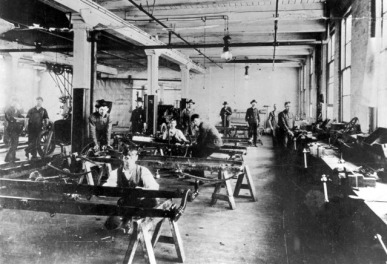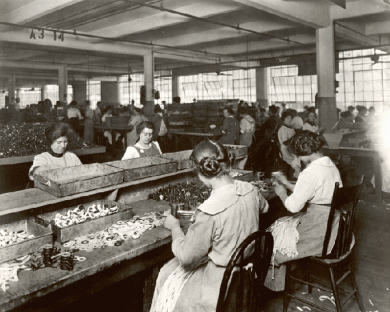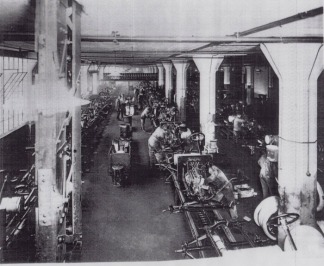Gradual Implementation and Experimentation
|
How Model Ts were assembled before Ford's innovation
The Ford Motor Company's moving assembly line wasn't as sudden of an innovation as many like to think. Instead, Henry Ford took William Klann's inspirational visit to the Swift Meatpacking Plant to heart and assigned P.E. Martin and Charles Sorrenson, his two top engineers, to apply the meatpacking's tactics to his own car factory in Highland Park. Magneto flywheels were the first to be mass-produced by a moving assembly line in early 1913. Because the experiment was successful, a push conveyor was installed in summer of 1913 with a high conveyor following in the fall. Needless to say, the experiment was an overwhelming success, and the Highland Park Plant was fully mechanized by the end of 1913.
Women working on the magneto flywheel
|
"Ford's overhead conveyor marked a new direction in automobile assembly—the use of automation, the moving of a procession of parts in and out of machines without human intervention."
~Russ Banham Multiple Model Ts moving down the assembly line on a conveyor belt
"Save ten steps a day for each of twelve thousand employees, and you will have saved fifty miles of wasted motion and misspent energy."
~Henry Ford "Henry Ford latched onto a concept that was, for manufacturing, rather revolutionary—instead of bringing the man to the work, the work must be brought to the man."
~ford.com |



